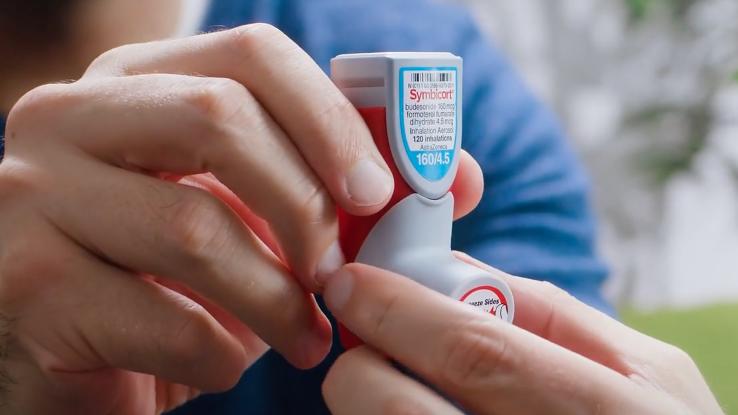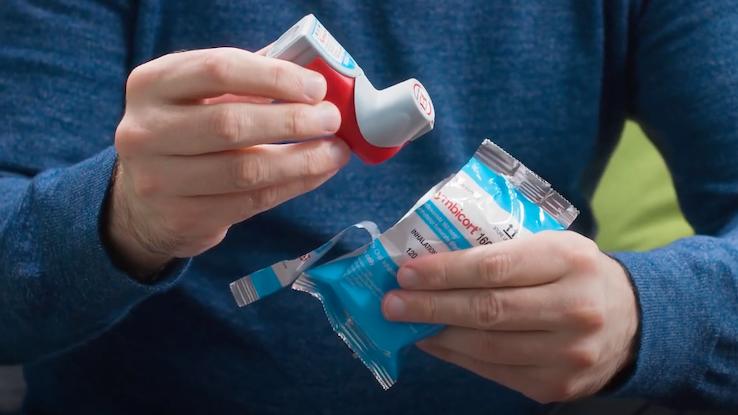
Symbicort is an inhaled medication that helps to reduce symptoms of chronic obstructive pulmonary disease (COPD) and asthma, both of which are typically long-term lung conditions that affect millions of Americans. While the medication works for managing long-term symptoms, Symbicort can be expensive — but the cost can vary depending on the pharmacy you use and the insurance coverage you have. If you have private insurance, you may be eligible for a reduced monthly payment. Those without insurance or who have Medicare Part D coverage may also qualify for copay assistance.
If you’ve recently been prescribed a Symbicort inhaler, you may have questions about what your personal costs could be. While your unique insurance and healthcare situation will ultimately determine your final cost, learning more about the price of a Symbicort inhaler can help you better anticipate and plan for the amount you may be paying for this medication.
What Does a Symbicort Inhaler Treat?
Symbicort is used to treat asthma and COPD. According to the official Symbicort website, COPD is a progressive respiratory condition that affects millions of Americans. This condition causes inflammation of the airways and the lungs — a type of swelling that can make them narrower and lead to mucus buildup from the irritation. It is this buildup of mucus in the airways that often leads to breathing problems and flare-ups for COPD patients.

People with COPD may use Symbicort to reduce flare-ups and symptoms of related lung conditions, including emphysema and bronchitis. Symbicort is recommended for maintenance use — meaning it’s meant for regular, daily, long-term use — and it may improve lung function in as soon as 5 minutes. Because it’s meant for maintenance use, the inhaler isn’t intended for use as a rescue inhaler to treat sudden or worsening symptoms. The inhaler is most effective when it’s used over a long period of time and is intended to reduce the need for patients to use rescue inhalers.
The inhaler is also approved for use in asthma patients who are at least 6 years old. Symbicort is indicated for those whose asthma isn’t well-controlled with a medication such as an inhaled corticosteroid and in patients who require Symbicort along with medications like inhaled corticosteroids.
Nearly 25 million Americans live with asthma, a respiratory disease that can cause inflammation of the walls of a person’s airways due to exposure to triggers and inhaled irritants. In addition to causing the airways to narrow, asthma may limit someone’s airflow, meaning they aren’t getting enough air when they breathe. As with COPD patients, Symbicort acts as a long-term controller medication, rather than a quick-relief inhaler during an emergency situation, for people with asthma. Instead of providing instant relief, Symbicort helps control inflammation in the lungs and keep airways open over an extended period of time.
When you use Symbicort, it’s likely that you’ll see gradual, not immediate, improvement in your symptoms. It’s important to continue taking this medication as prescribed, even when your breathing starts to improve after time. If you stop taking the medication, you won’t get the dose you need to maintain your progress, and your condition could worsen. If you’re experiencing side effects with Symbicort, always talk to your doctor before discontinuing use of the medication.
How Does a Symbicort Inhaler Work?
Inhalers are portable devices with mouthpieces and small canisters of medication that send that medicine into your lungs. With what’s known as a metered dose inhaler, you press down on the medication canister to dispense an aerosolized dose of the medicine in tiny particles that you can breathe in. Another type of inhaler, called a dry powder inhaler, requires you to take a quick, deep breath when your lips are around the mouthpiece to suck the medication into your lungs. In the United States, Symbicort is only available in a metered dose inhaler; the dry powder Symbicort inhaler is available in other countries.

The main components of Symbicort are the medications budesonide and formoterol. Budesonide is an inhaled corticosteroid (ICS), and formoterol is a long-acting beta2-adrenergic agonist (LABA). ICS medications reduce inflammation in the lungs, and LABA is a bronchodilator that relaxes the smooth muscles around the airways in the lungs. Both medications can make it easier to breathe and help your body get more air in each breath. They work together to provide long-term relief for asthma and COPD.
How Much Does a Symbicort Inhaler Cost?
According to Symbicort, a 30-day supply of the medication is $303.42 for an 80/4.5 mcg (which has 80 micrograms of budesonide and 4.5 micrograms of formoterol) inhaler and $346.83 for a 160/4.5 mcg (160 micrograms of budesonide and 4.5 micrograms of formoterol) inhaler. However, this amount can vary based on your insurance and any out-of-pocket costs you need to pay. Without insurance, you will pay the amount that your pharmacy determines you owe.

With private or employer-provided insurance, the average out-of-pocket cost is $33.22 each month. The average out-of-pocket cost is $31.03 per month for people with Medicare Part D coverage and $0.90 to $1.82 per month for people with Medicaid. Depending on the state where you live, if you have Medicaid you may be able to have your copay fee waived for your prescription of Symbicort.
Resource Links:
https://www.mysymbicort.com/cost-assistance.html
https://www.lung.org/about-us/mission-impact-and-history/our-impact
https://www.mysymbicort.com/copd/about-copd.html
https://www.ncbi.nlm.nih.gov/pmc/articles/PMC3908831/
https://www.empr.com/drug/symbicort-80-4-5/
https://www.mysymbicort.com/copd/side-effects.html
https://www.mayoclinic.org/diseases-conditions/asthma/in-depth/asthma-inhalers/art-20046382





